Streaming services constantly try to make their new shows the next big thing, but the power of the nostalgia watch is unrivaled. It’s not just about Friends andThe Office — every so often, an old show just starts to gain traction again, and it seems like everyone across social media is rewatching it at the same time. Columbo, The Sopranos, and Breaking Bad, for instance, have all risen back into the zeitgeist within the last couple of years.
House-sized asteroid hurtling towards Earth for close approach, NASA reveals
13.10.2023 - 05:07 / tech.hindustantimes.com / Karl Reinmuth
With its advanced tech such as the NEOWISE telescope, Atacama Large Millimeter/submillimeter Array (ALMA), Pans-STARRS1 and Catalina Sky Survey, NASA has revealed details about an asteroid that will come close to Earth. An asteroid, given the designation of Asteroid 2023 TC1, is on its way towards Earth and could make its closest approach to the planet today, October 13.
NASA has tracked this asteroid's orbit using its various satellites and space and ground-based telescopes and revealed crucial information about its oncoming approach.
As per the details, Asteroid 2023 TC1 is expected to make its closest approach to the planet at a distance of 4 million kilometers, and at a staggering speed of 29183 kilometers per hour. It is travelling even faster than an intercontinental ballistic missile!
This space rock belongs to the Apollo group of Near-Earth Asteroids, which are Earth-crossing space rocks with semi-major axes larger than Earth's. These asteroids are named after the humongous 1862 Apollo asteroid, discovered by German astronomer Karl Reinmuth in the 1930s.
In terms of size, NASA estimates Asteroid 2023 TC1 to be nearly 46 feet wide, making it as big as a house! However, it isn't big enough to be classified as a potentially hazardous asteroid and is not expected to pose any threat to Earth.
While Asteroid 2023 TC1 has passed Earth before, this will be its first-ever close approach to the planet. Although its orbit will again cross Earth in 2024, it will not be a close approach, according to NASA's Small-Body Database Lookup.
NASA recently showcased the sample collected by its OSIRIS-Rex spacecraft from the surface of the asteroid Bennu, which included dust and rocks. NASA revealed that during a preliminary assessment conducted by the science team of the OSIRIS-REx mission, the samples collected from the surface of the Bennu Asteroid have high carbon content as well as water! Both of these indicate the presence of the building blocks of life!
This discovery was made during the preliminary tests and the scientific team will now conduct further studies on the carbon compound found in the asteroid sample. It underwent scanning under an electron microscope, infrared measurements, X-ray diffraction, and chemical element analysis.
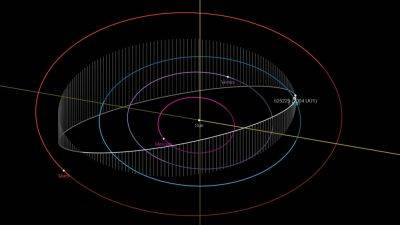
Statue of Unity-sized asteroid to pass Earth today, reveals NASA
There have been several close calls with asteroids in history. But did you know that not all asteroids have the same composition? According to NASA, the three primary classifications of asteroids are C-type, S-type, and M-type. C-type asteroids, which are composed primarily of carbon-rich substances, are the most frequent. S-type asteroids, which are made up mainly of silicate minerals, are less common. M-type asteroids, which are primarily composed of metal, are the least prevalent. One rare asteroid has recently piqued the interest of scientists as it is reportedly made of gold, silver and nickel deposits!
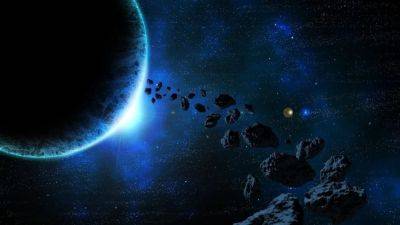
620-foot asteroid to pass close to Earth tomorrow! NASA reveals distance, speed, and more.
NASA keeps a regular check on the Asteroids passing close to the Earth. Asteroids have posed a potential threat to Earth for millions of years now. That is why it is extremely important that we prepare for all eventualities. Stopping an asteroid is impossible at the last moment, but we can take preventative measures and that is why space agencies like NASA keep a watch on all asteroids approaching Earth. In a journey to track asteroids, NASA has successfully executed the DART mission where it was able to divert an asteroid from its path. Now, NASA has tracked a gigantic asteroid traveling close to Earth. Check out the details below:
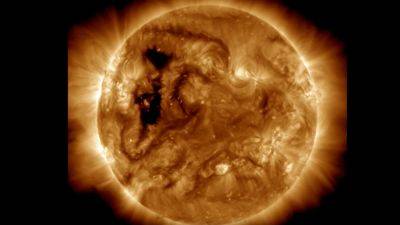
Solar storm strike possible soon, as solar wind stream rushes towards Earth; NASA reveals its origin
Just a couple of days ago, a sneaky solar storm struck the Earth, sparking auroras in the Arctic Circle. The reason for the storm was not known since no coronal mass ejection (CME) was expected to hit the planet. It turned out that a crack opened up in the magnetosphere, allowing solar radiation to easily pass through. Now, another similar incident is on the cards, only at a much higher intensity. A massive hole has opened up on the Sun this time which is releasing a stream of solar winds. It is expected to reach the Earth on October 30, when it can trigger a solar storm, as per the forecast. The NASA Solar Dynamic Observatory images show the hole through which solar winds are escaping.
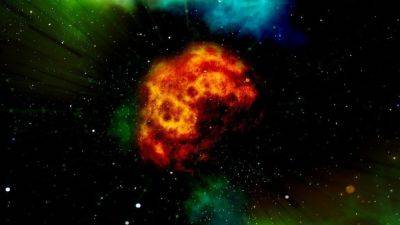
Chelyabinsk asteroid-sized space rock to pass Earth at very close quarters today
According to NASA, an asteroid, given the designation of Asteroid 2023 UV6, is on its way towards Earth and will pass the planet at a close distance today, October 27. The asteroid was discovered by NASA's Defense Coordination Office (PDCO), which is responsible for monitoring the skies and keeping a watch on various Near-Earth Objects (NEOs). Asteroid 2023 UV6 is expected to pass the planet at a distance of 3.9 million kilometers while travelling at a speed of 26329 kilometers per hour, as per the space agency. Here's all about Asteroid 2023 UV6.

1200-foot asteroid to pass Earth today, says NASA; it is as big as the Empire State Building
NASA tracks asteroids using a combination of ground-based and space-based telescopes. The NASA-funded Asteroid Terrestrial-impact Last Alert System (ATLAS), scans the night sky for moving objects and reports any potential asteroid detections, while some space-based observatories use infrared sensors to detect asteroids and their characteristics. Some of these include the Wide-field Infrared Survey Explorer (WISE) and the NEOWISE mission. Using these advanced instruments, the space agency has revealed information about a 1200-foot Potentially Hazardous Asteroid that is set to pass Earth today. Know all about it.

Solar storm barrage strikes Earth! NASA reveals massive impact effect
The solar storm event on October 20 has become somewhat of a mystery to astronomers and space weather physicists. The storm was triggered by a couple of coronal mass ejections (CME) that sideswiped the Earth and did not make head-on contact with the planet. They left the Sun one after the other in small eruptions, that should not have been carrying a high amount of solar matter or electromagnetic charge, but somehow its impact was far greater than some of the strongest CMEs we have seen in recent times. This is quite confusing as most forecasters had predicted a G1-class intensity for the storm, and while the storm itself was clocked at G1, the aurora display surpassed the intensity seen in that category. And now, a NASA image has been shared by a National Oceanic and Atmospheric Administration (NOAA) institute that shows the widespread impact of the solar storm.
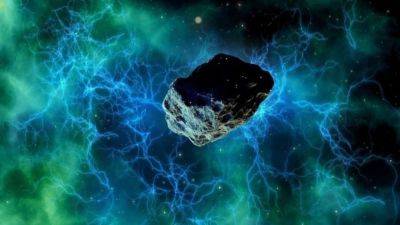
120-foot Asteroid 2023 UR1 to pass close to Earth today; know what NASA revealed
Do you know how many asteroids NASA scientists have tracked to date? Approximately 1,298,148 asteroids have been identified by NASA. The space agency employs a range of advanced ground and space-based telescopes for tracking and researching these cosmic rocks, primarily concentrated within the asteroid belt situated between the orbits of Mars and Jupiter. Telescopes and observatories such as NEOWISE, the Atacama Large Millimeter/submillimeter Array (ALMA), Pan-STARRS1, and the Catalina Sky Survey play pivotal roles in the study of asteroids and the mitigation of uncertainties surrounding their close encounters with Earth.
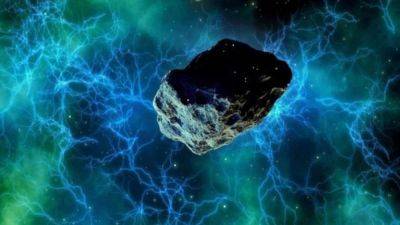
Apollo asteroid to pass Earth today, reveals NASA
For years, it has been known that the most likely cause of the extinction of dinosaurs was an asteroid impact. The most common theory behind the extinction is the Alvarez hypothesis, which claims that an asteroid struck Earth nearly 65 million years ago and wiped out entire species of dinosaurs. This theory is backed by some proof too as scientists have also discovered its impact crater, known as the Chicxulub crater, buried under the Yucatan Peninsula in Mexico. As per the hypothesis, the impact of the asteroid would have caused the formation of huge tidal waves and an impact crater almost 140 km wide. Lland material would have splattered into space, changing the Earth into a nuclear winter-like environment, ultimately leading to the demise of dinosaurs.
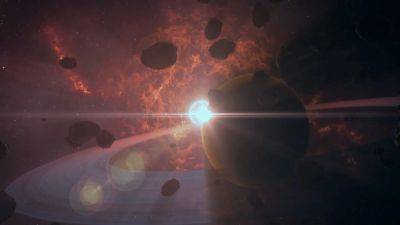
Apollo group asteroid to come closer than the Moon; Know details of approach
NASA has recently issued details about an asteroid designated as Asteroid 2023 TK15 that is expected to make its closest approach to Earth on October 20. This asteroid has been discovered and tracked using various advanced technological instruments such as the NEOWISE telescope, Atacama Large Millimeter/submillimeter Array (ALMA), Pans-STARRS1 and Catalina Sky Survey. Know all about it.
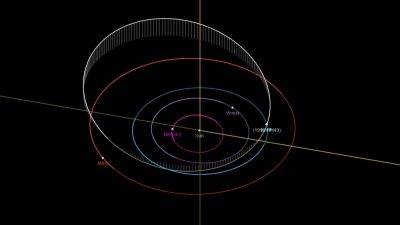
Potentially Hazardous Asteroid to pass Earth today! Know details
You may think asteroids are simply floating rocks in space and while it may seem so due to their appearance, it isn't quite the case. These space rocks can be classified into 3 types based on their structural composition. The most commonly found asteroids are S-type, which are made up of carbon-rich substances. On the other hand, S-type asteroids are made up mainly of silicate minerals and are less common. M-type asteroids are the least prevalent and they are primarily composed of metal. NASA recently sent out a mission to a metal-rich asteroid called 16 Psyche which is supposedly worth more than the whole planet's economy put together, at a staggering $10 quintillion!

600-foot asteroid to do a close flyby of Earth; NASA reveals size, speed, and more
Hazards like solar storms and asteroids constantly appear and pose threats to our planet. NASA diligently monitors Near-Earth Asteroids (NEAs) to safeguard our planet from potential impacts. When NASA's telescopes detect a new NEA, precise observations of its position in the sky are reported to the Minor Planet Center. Subsequently, the Center for Near-Earth Object Studies (CNEOS) utilizes this data to establish the most likely orbit of the asteroid around the Sun. To evaluate the risk of impact and the asteroid's orbit, NASA employs the innovative Sentry II system, featuring a unique algorithm. Sentry II strategically selects random points within the entire uncertainty region, enabling the program to pinpoint very low-probability impact scenarios. Recently, NASA has issued an alert concerning a colossal asteroid that is approaching Earth tomorrow:
